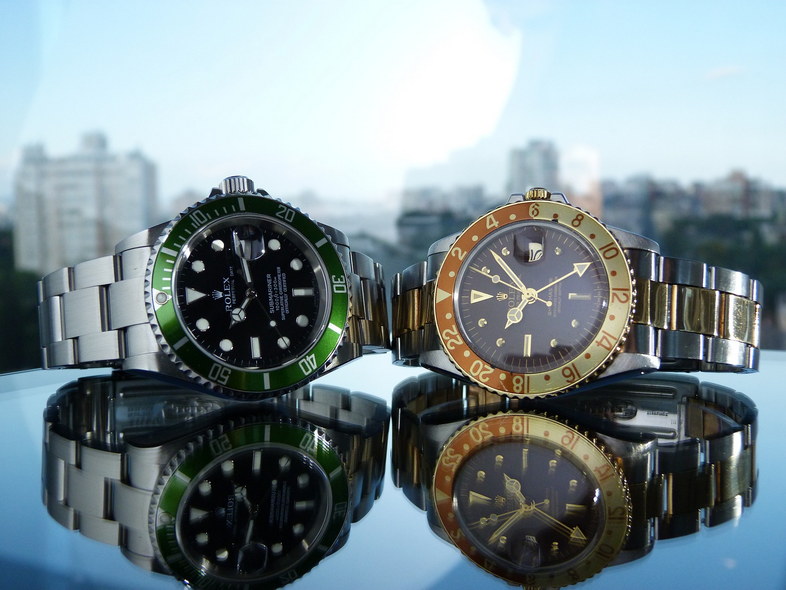For decades, dive watches have been a crucial tool for divers. Born out of the necessity of marine exploration, these wrist companions have come a long way, not just underwater but also in the realms of style and sophistication. What started as a simple time-tracking instrument has evolved into an amalgamation of cutting-edge technology and top-notch craftsmanship. This evolution, of course, didn’t happen overnight. The history of the dive watch is as intriguing as the deep seas it was designed to explore.
The first dive watch can be traced back to the early 20th century, during a period when wristwatches were starting to replace pocket watches. However, the functionality of these early models was far from what we identify as dive watches today. It wasn’t until the 1920s when things started to get interesting. This was when watch manufacturers began to understand the significance of making watches water-resistant. A slew of patents filed during this period showcases the various techniques and materials that were being explored to improve water resistance.
The modern concept of a dive watch, however, didn’t materialize until the 1950s. In 1953, a couple of watch manufacturers, Rolex and Blancpain, introduced models that had features now synonymous with dive watches. Rolex came up with the Submariner, and Blancpain with the Fifty Fathoms. Both models had a high level of water resistance and a rotating bezel, two traits we now consider fundamental for any dive watch.
Why choose a dive watch?
But as the saying goes, “form follows function”. The true test of a dive watch isn’t in its history but in its design and functionality. Now that you know how dive watches came to be let’s focus on what truly matters. When choosing a dive watch, several factors need to be considered: water resistance, legibility, unidirectional bezel, materials used, movement, helium escape valve, and the screw-down crown. These are the components that contribute to a timepiece being labeled a ‘dive watch’.
Before we get into the nitty-gritty of each of these factors, it’s important to understand that a dive watch isn’t just for diving. These wrist watches have become a fashion statement and a symbol of adventurous spirit. Whether you’re an avid diver or just someone who appreciates the rugged yet sophisticated aesthetics of these watches, knowing what to look for can help you make the right choice.
Remember, when it comes to dive watches, the devil is in the detail. The most efficient dive watches are a perfect blend of style, functionality, and durability. But let’s not rush. In the next sections, we will discuss each of these characteristics in detail to help you understand what you should be looking for in a dive watch.
Water resistance
Undoubtedly, the first factor to consider when choosing a dive watch is its water resistance. After all, a dive watch’s primary function is to survive underwater. But what does water resistance mean in the context of watches?
In simple terms, water resistance signifies how well a watch can prevent water ingress, and it’s generally measured in meters (m), feet (ft), or atmospheres (ATM). A watch labeled as water-resistant to 30m (or 3 ATM) should technically withstand the pressure at a depth of 30m underwater. However, this doesn’t necessarily mean you can dive 30m deep with such a watch. It is only deemed suitable for light splashes or brief immersions.
For a watch to be considered a true dive watch, the International Organization for Standardization (ISO) recommends a water resistance of at least 100m. However, for serious divers who dive deep into the ocean, watches with a water resistance of 200m, 300m, or even 1000m are preferable.
Legibility
No matter how deep underwater you are, time is of the essence. Therefore, a dive watch should allow you to read the time quickly and easily, in all conditions. This is where legibility comes into play.
Legibility depends on factors such as the size and color of the markers and hands, the contrast between the dial and the markers, and the presence of luminous pigments. A good dive watch will have large, bold markers and hands, preferably coated with a luminescent material for better visibility in the dark depths.
Unidirectional bezel
One of the defining features of a dive watch is the unidirectional rotating bezel. But what is it for, you may ask? The bezel helps divers track their time underwater, an essential factor when considering oxygen supply.
A unidirectional bezel only rotates counterclockwise, ensuring that any accidental movement would only shorten the perceived dive time, keeping the diver safe. To use it, you simply rotate the bezel until the zero marker aligns with the minute hand. As time passes, the minute hand will point to the elapsed time on the bezel.

Materials
Materials matter in dive watches, both for durability and comfort. Common materials include stainless steel, titanium, and ceramics. Stainless steel is durable and corrosion-resistant, making it ideal for marine conditions. Titanium is lighter and just as corrosion-resistant but is typically more expensive. Ceramics are resistant to scratches, but they can shatter upon high impact.
For the strap, you may find stainless steel bracelets, rubber straps, or nylon straps. It’s crucial to choose a material that is not only comfortable on your wrist but also resistant to the corrosive effects of salt water.
Movement
The movement is the heart of a watch. It’s the mechanism that powers the watch and moves the hands. There are mainly two types of movements: mechanical and quartz. Mechanical movements, which include automatic and hand-wound types, are often favored by enthusiasts for their craftsmanship and smooth sweeping second hand. However, they require regular servicing. Quartz movements, powered by a battery, are more accurate and require less maintenance, but the ticking second hand might not appeal to everyone.
Helium escape valve
If you’re into saturation diving, a helium escape valve becomes essential. During saturation dives, helium atoms can enter the watch case due to their small size. When ascending too quickly, these atoms can cause the watch crystal to pop off due to the pressure difference. A helium escape valve allows these atoms to escape, protecting the watch.
Screw-down crown
The crown is a weak spot for water ingress. That’s why dive watches often have screw-down crowns, which create a seal when fully screwed in, enhancing the watch’s water resistance. Always ensure the crown is screwed in before taking your watch underwater.
In summary, a dive watch is more than just a stylish timepiece. It’s a functional tool that has evolved over the years to cater to the specific needs of divers. Remember these features when shopping for your next dive watch, and you won’t be led astray.

